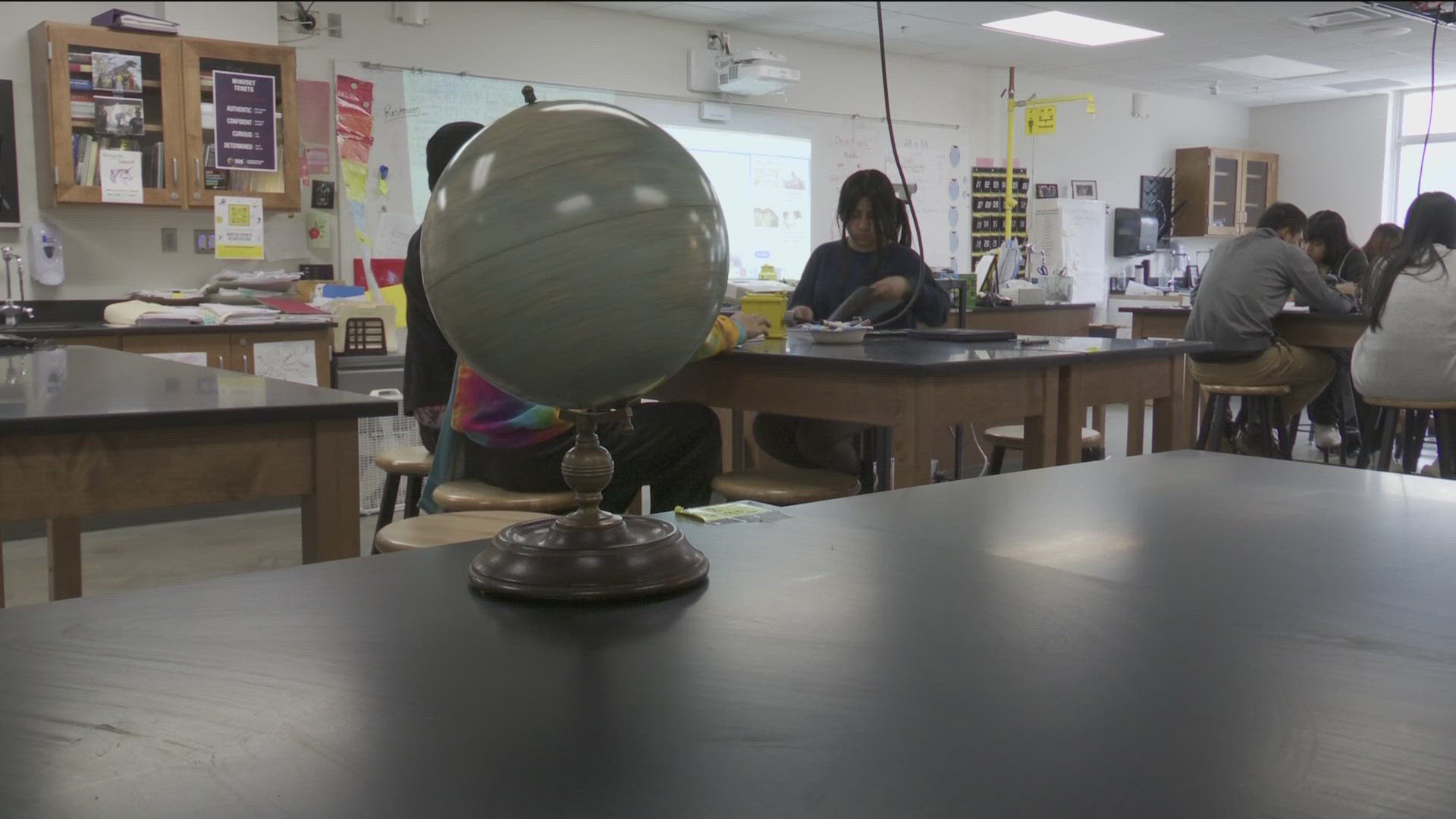SAINT PAUL, Minn. — No matter where you’re from on the spinning globe, St. Paul Public Schools will welcome you.
State numbers show it is home to the highest population of English Learners (E.L.) in Minnesota. SPPS officials estimate 28% of their students are actively learning English, but the languages kids speak at home are always changing.
“When I first started here, most of my students were Asian,” Traci Buckle, a Como Park High School E.L and Science teacher said.
But after ten years in the district, her classrooms have evolved and Buckle said she sees more Spanish-speaking students. Administrators are noticing the same trend in E.L. students.
“The population of E.L. kids numbers-wise, is remaining the same, but the place of origin is changing,” said Sarah Schmidt de Carranza is the Executive Director of Multilingual Learning for SPPS.
Schmidt de Carranza said the district does not track students by home country. However, she said the district can assess trends in students who arrive at the district with inconsistent learning.
“The official title is Students with Limited or Interrupted Formal Education,” Schmidt de Carranza said. “We're seeing more students coming from Latin America with those needs.”
Even when global conflict keeps churning, funding to help students doesn’t always keep up. According to figures provided to KARE 11 by the district, SPPS planned to spend $37.5 million dollars in 2023 on English Language services.
The state only provided $11.3 million, leaving a funding gap of $26.2 million dollars.
“Costs of everything have kind of skyrocketed over the last few years,” Schmidt de Carranza said. “There's been increases in our labor contracts for both of our teaching staff and our bilingual educational assistance staff.”
Schmidt de Carranza said the district will pull from the General Fund to cover gaps, rather than cutting back E.L. services.
“It’s a non-negotiable,” Schmidt de Carranza said. “We spend money on the front end to educate our children to participate in a democracy, or we spend it on the back end taking care of needs that we should have taken care of in the first place.”
The investment in students with disrupted education is paying off quickly.
“I always dreamed to be a nurse to help the people back in my country,” Eh Ler Paw, a Como Park senior, said.
Paw came to U.S. from a refugee camp in Thailand during the COVID-19 pandemic. Despite struggling to learn English in remote classes, Paw eventually became fluent enough to tackle the subject she found most difficult: science.
“I will go to a university to study [nursing],” Paw said. “I'm excited and nervous to do the next step.”
Four years into learning English, she’ll graduate with her best foot forward.
“When I checked, she was 21st in her entire class as far as academics go,” Buckle said, who taught Paw for several years. “When people are bilingual and trilingual and multilingual, I mean, that's a lot of skill they're bringing into the classroom and this ability to problem solve.”
“They're resilient. They’re just good kids.”

